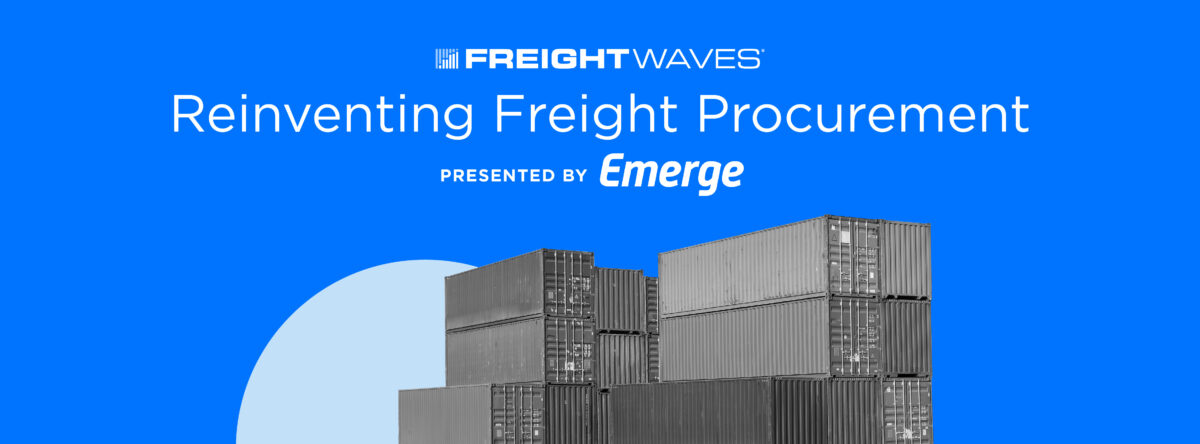It is time to take control of low-volume contract lanes
Low-volume contract lanes are often overlooked due to their size, but if mismanaged, these small volumes can have a large impact on a shipper’s bottom line.

Low-volume contract lanes are often overlooked due to their size, but if mismanaged, these small volumes can have a large impact on a shipper’s bottom line.
Shippers and carriers alike have been forced to deal with the financial fallout of a global pandemic, war, rising fuel costs and the looming threat of an economic recession.
The holidays are quickly approaching, and shoppers are checking off their gift lists. This year, however, the festive frenzy has not been strong enough to create a traditional peak season effect.
The holidays are quickly approaching, and shoppers are checking off their gift lists. This year, however, the festive frenzy has not been strong enough to create a traditional peak season effect.
Meeting consumer demands is a team effort that involves shippers, carriers, retailers and technology providers.
Many shippers are relying on contracts and favoring their tried-and-true carrier partnerships instead of taking advantage of plummeting spot rates.
Carriers are grappling with unfavorable market shifts across the board. With prowess and the right partners, however, carriers can remain profitable — and even competitive — in a loosening market.
While shorter bid cycles can prove especially valuable during market shifts, it’s important to remember that freight markets are characterized by their volatility.
Shippers are expected to do their due diligence when it comes to choosing carrier partners. That includes choosing companies that are working within FMCSA guidelines, a task that requires knowledge of said guidelines.
With more choices than ever, shippers must come up with a plan for choosing — and evaluating — their carrier partners.
For many carriers, the rapid adoption of technology has sparked skepticism and reticence.
In order to be proactive in both the planning stage and throughout the year, shippers need access to accurate, digestible and up-to-date data.
The logistics industry is collaborative by nature and leaning into that fact is one of the most effective ways carriers can ward against turmoil during market shifts.
Shippers have already begun negotiating lower contract rates, and carriers should prepare for this trend to continue. This will prove especially important for small and mid-size carriers who often do not have the profit margins to weather a storm.
As more solutions enter the market and companies’ technological suites have become more sophisticated, integrations have gone from nice-to-have perks to need-to-have requirements for many shippers.
When pandemic-fueled headwinds pushed historic amounts of freight into the spot market, many shippers found themselves running an unmanageable amount of seasonal bids to compensate for annual contract failures.
Shorter RFP cycles allow shippers to take advantage of market shifts in the short term, enabling them to maintain rates that are as close to real-time market offerings as possible.
This year, American consumers are expected to spend $7.7 billion – a number that has climbed over $1 billion since 2019 – on food items leading up to the July 4 holiday.
Partnering with the right carriers can be a complex decision, and making the wrong choice can easily threaten a shipper’s bottom line.
Agility is more important than ever, as pandemic-related headwinds continue to play out and new technologies strengthen competing companies by offering increased flexibility.
Building the most effective RFPs possible requires self-awareness, attention to detail, industry insights and a willingness to adopt new technologies.
Many shippers are now looking to shorten the duration of their bid contracts in order to take advantage of current capacity and avoid being locked into sky-high rates as the market shifts.
As farmers prepare for harvest, shippers should ready themselves for the seasonal rate increases and capacity shortages that accompany fresh fruits and veggies each year.
Consumers are becoming more aware of both the urgency of climate change and the complexities of the supply chain. Companies should be prepared for consumers to start calculating supply chain sustainability into their purchasing decisions.
Weather disruptions have always been common across the supply chain. With climate change-induced severe weather conditions on the rise, logistics companies should expect – and plan for – even more challenging conditions in the future.
In order to take advantage of different RFP options, shippers must have access to the data they need to determine which lanes need to be repriced and when. Success requires coupling decision-making with efficient technology.
Shippers may benefit from limiting the number of partners they work with in a loose market, but this exclusionary approach has become a serious — and seriously expensive — problem as capacity has tightened and rates have climbed to record highs.
Shippers are buoyed by the promise of falling rates in the coming months, but this optimistic outlook may put even more strain on rate negotiations in the meantime.